Google Drive Export
Overview:
Nanonets streamlines the process of exporting files or extracted data directly to your Google Drive. Once a file is processed and data extracted, it is automatically exported to the Google Drive, based on the configured export trigger in the export block. You can add multiple Google Drive Blocks in the export and export to different drives at the same time.
Use Case:
Dynamic File Naming:
- Use the extracted data to dynamically rename files before exporting. This export method is particularly useful for maintaining consistent file naming conventions. For example, files can be renamed using template variables such as {{invoice_id}} and {{buyer_name}}, which are automatically replaced with relevant data extracted from each processed document.
- Upload the extracted data as CSV, XML, or XLSX files to Google Drive. For example, if you are extracting a table from an invoice, you can export this data as CSV, XML, or XLSX files.
Steps to Set Up Export to Google Drive:
- Access Workflow:
- From the Nanonets Extract Data page, navigate to the 'Workflow' section via the left panel.
- Browse Export Options:
- Click on “Browse all export options” to see all supported export methods.
- Select "Export files to Google Drive" from the list of options.
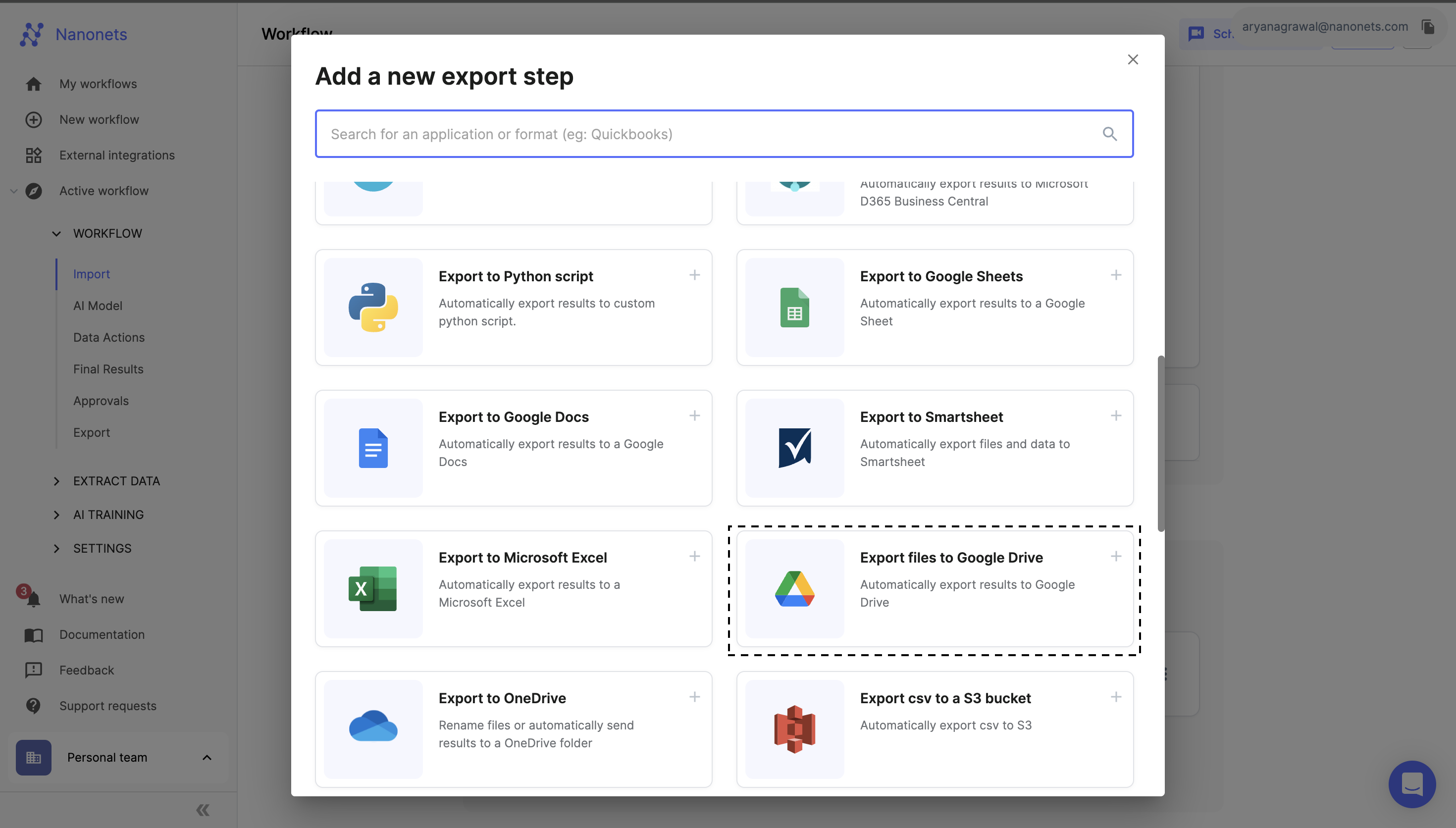
- Connect Your Google Drive Account:
- Select “Connect your Google Drive Account” and authorize Nanonets to access your Google Drive.

Exporting CSV/XML/XLSX:
If you want to export data to as CSV/XML/XLSX to a Google Drive.
- Type of Action: Select type of action triggered
- Select “Export captured data” option from the dropdown and using this you can export the captured data transform into a CSV/XML/XLSX to a Google Drive.

- Export Format:
- Select Export Type:
- Choose from the following file types: CSV per document, XML per document, MS Excel per document.
- You can create a new CSV/XML/XLSX for each exported file.
- Select Export Type:

File Content Settings:
- Customize your export by selectively including or excluding fields in the exported data.
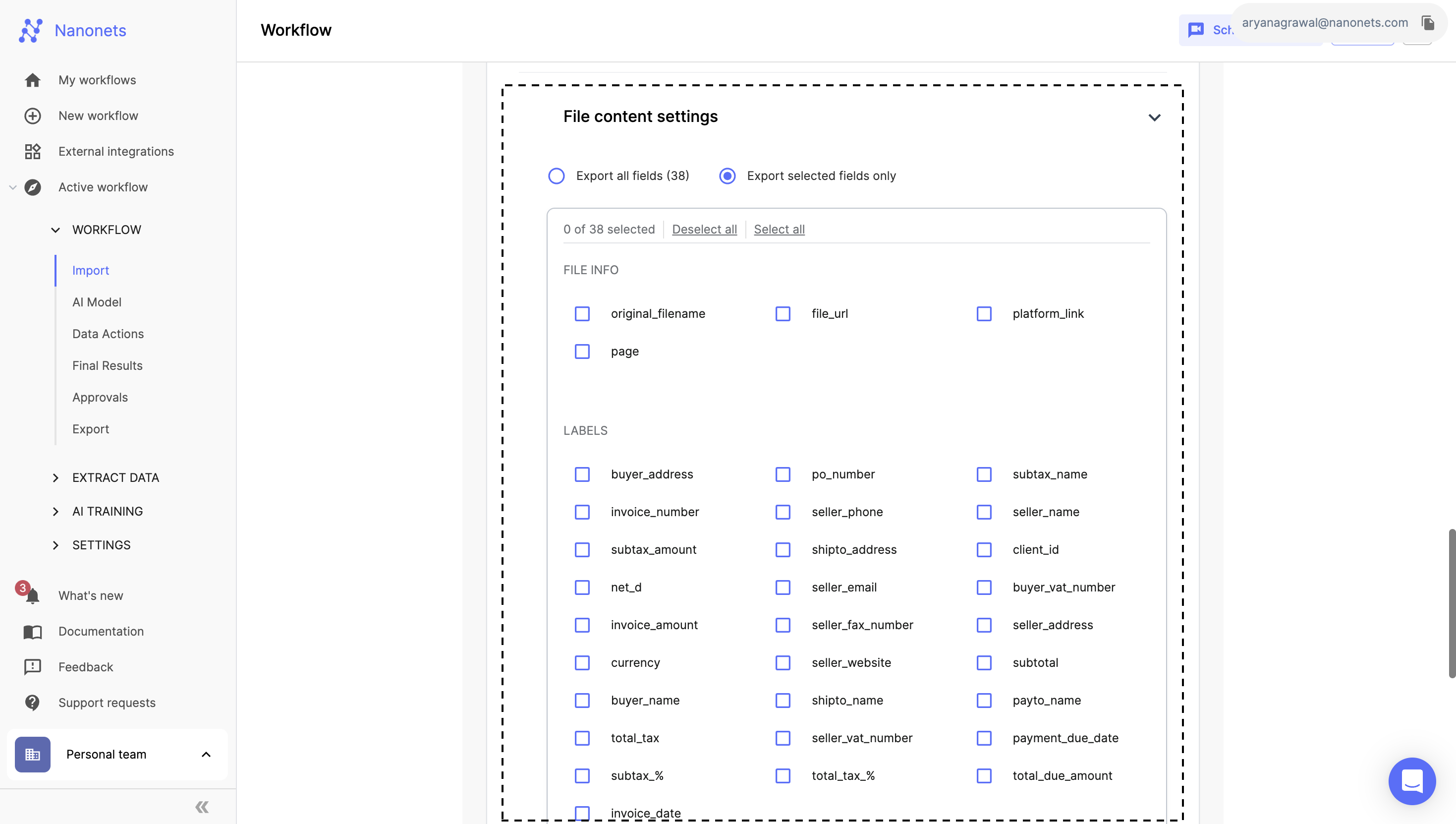
Exporting PDF:
If you want to export uploaded file after renaming it to a Google Drive.
- Type of Action: Select type of action triggered
- Select “Rename and Move file” option from the dropdown and using this you can export the upload the renamed file to a Google Drive.
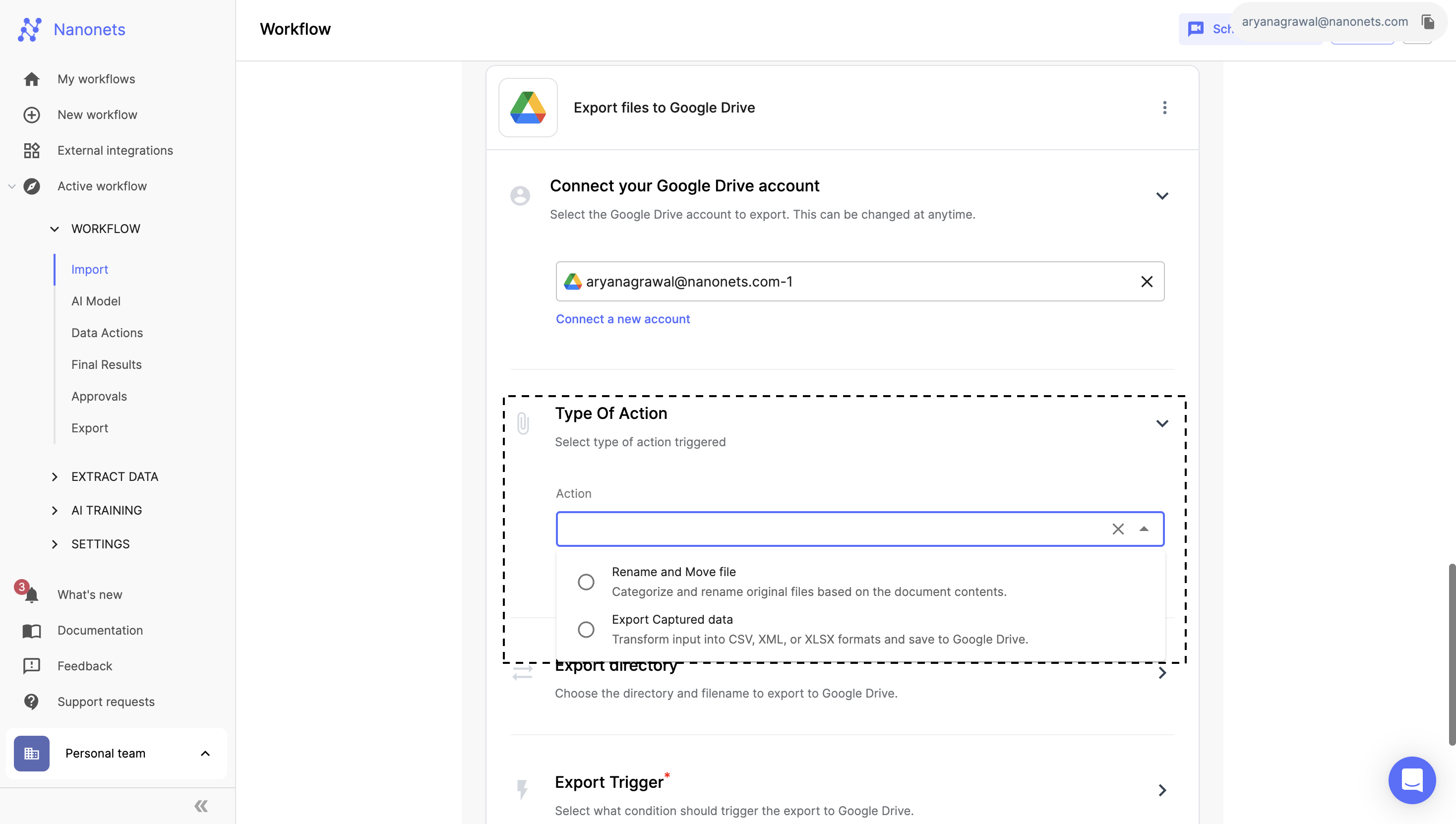
- Export Directory: Choose the directory and filename to export to google drive.
- Specify the target directory and filename in Google Drive:
- Choose the folder and any subfolders within the designated parent folder for the uploaded document.
- Rename the file using data extracted from your documents, such as {{invoicenumber}}{{buyer_name}}, in the "File Name" section. Or you can choose to export the original filename.
- Specify the target directory and filename in Google Drive:
Note: Currently, Nanonets only supports exporting files to My Drive in Google Drive. Exporting to a Shared Drive (Team Drive) is not supported due to permission limitations in Google OAuth and API restrictions.
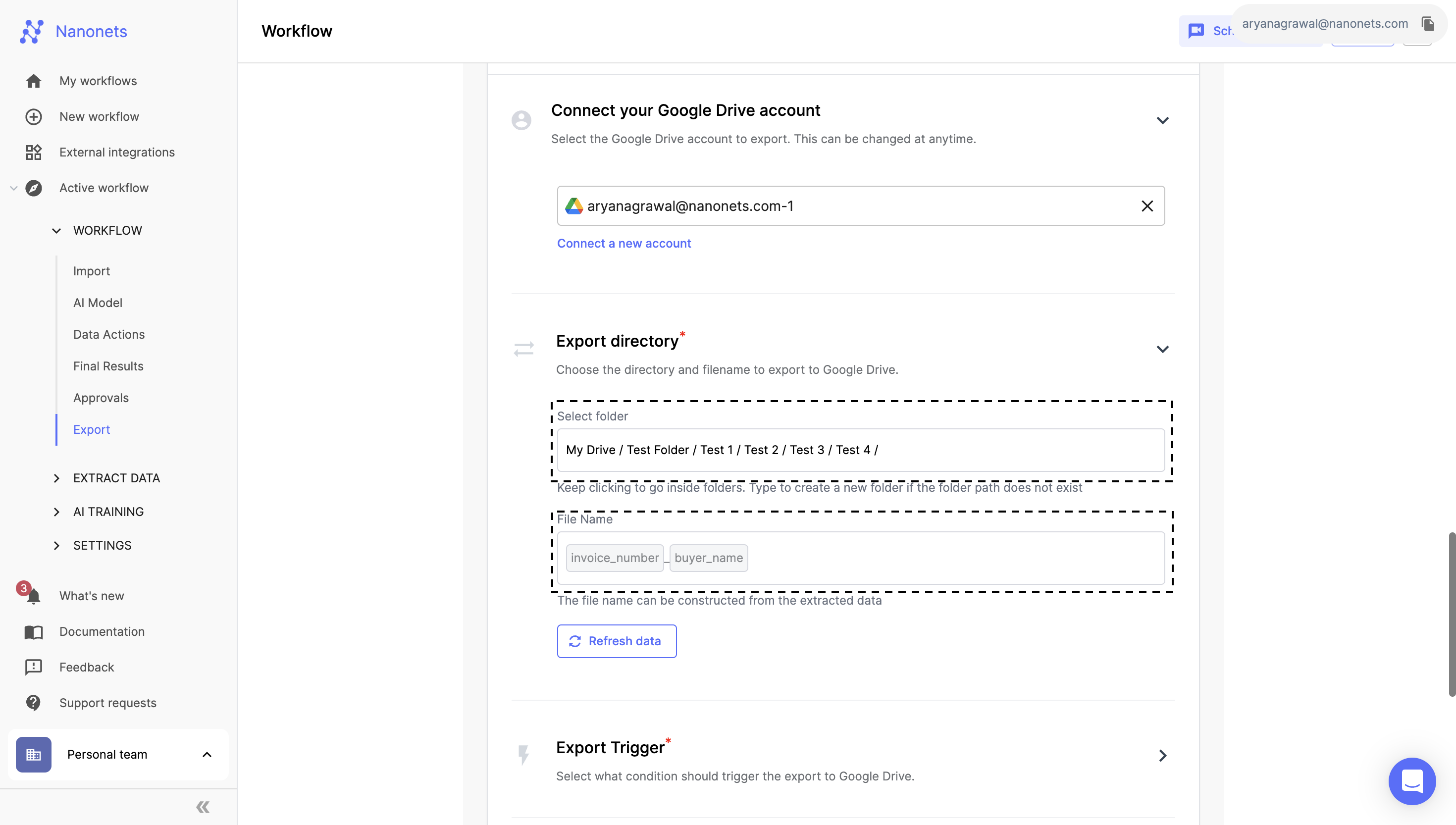
- Export Triggers:
- Set up one or more export triggers based on your requirements. Toggle each trigger to enable or disable it:
- On Inference: Automatically export data as soon as processing is complete.
- On All Validations Passing: Export only after all validations and approvals are confirmed.
- On Approval: Export upon manual approval.
- On Assignment: Export when a file is assigned or unassigned.
- On Rejection: Export when a file is manually rejected
- Set up one or more export triggers based on your requirements. Toggle each trigger to enable or disable it:
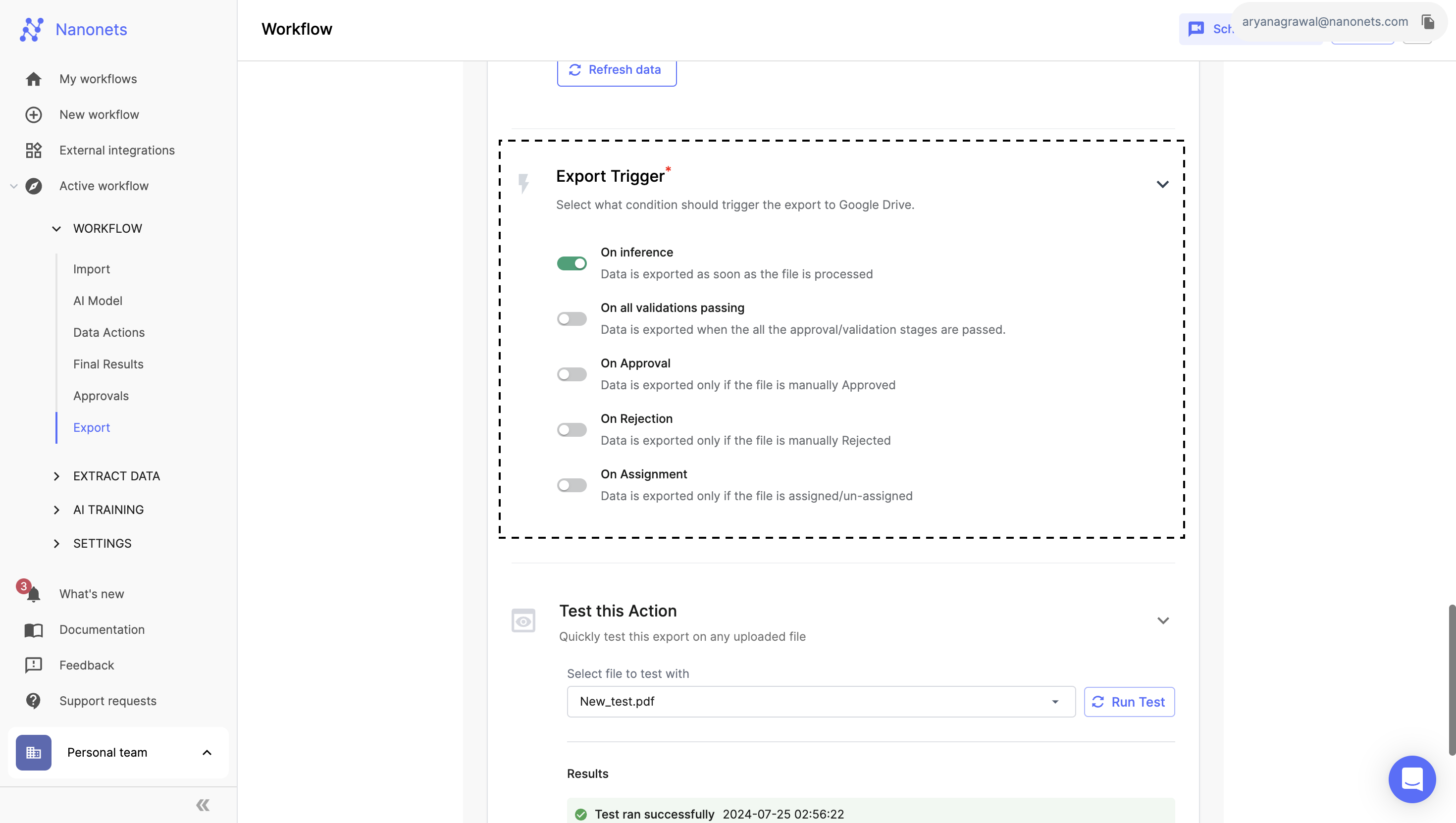
- Save and Test Configuration:
- After authorizing Nanonets to access your Google Drive and setting the export preferences, use the “Test this Action” feature to ensure everything works as expected.
- Click "Add Integration" to apply and finalize your settings.
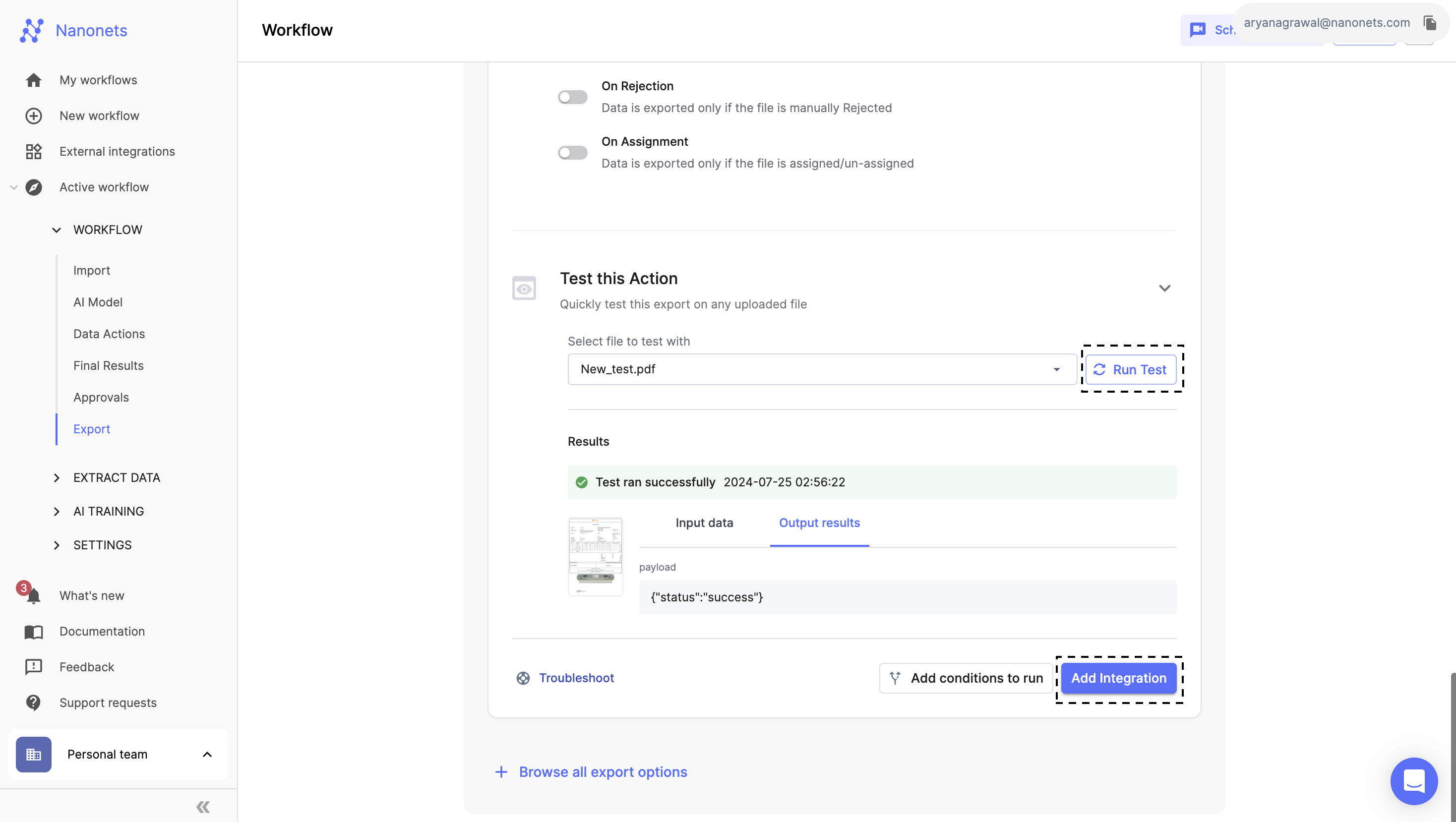
How to add conditional export?
- Configure Conditions:
- Click the "Add Conditions to Run" button to start configuring your conditional export.
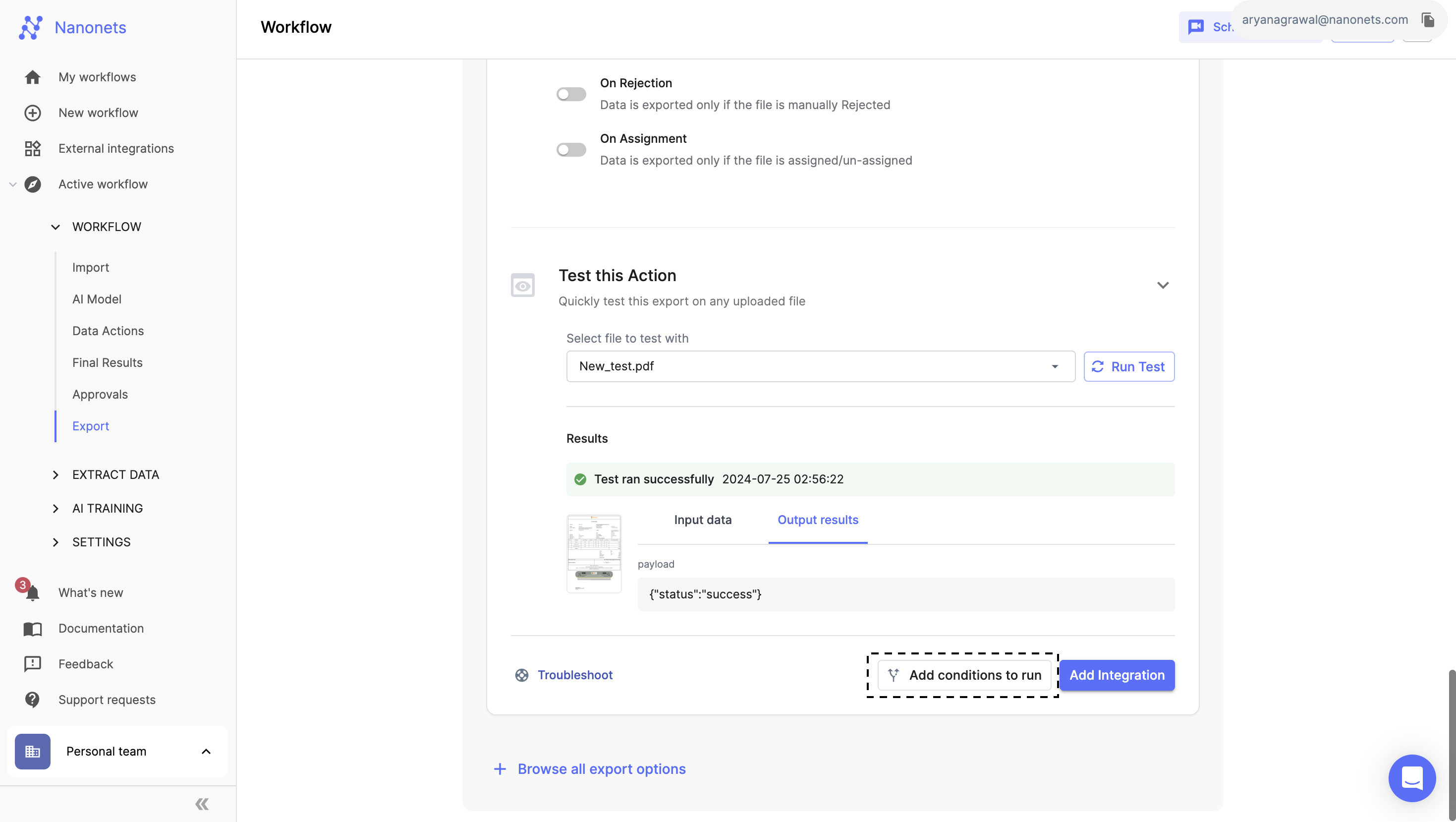
- Add one or multiple conditions based on the extracted data fields. You can combine these conditions using 'AND' and 'OR' operators.
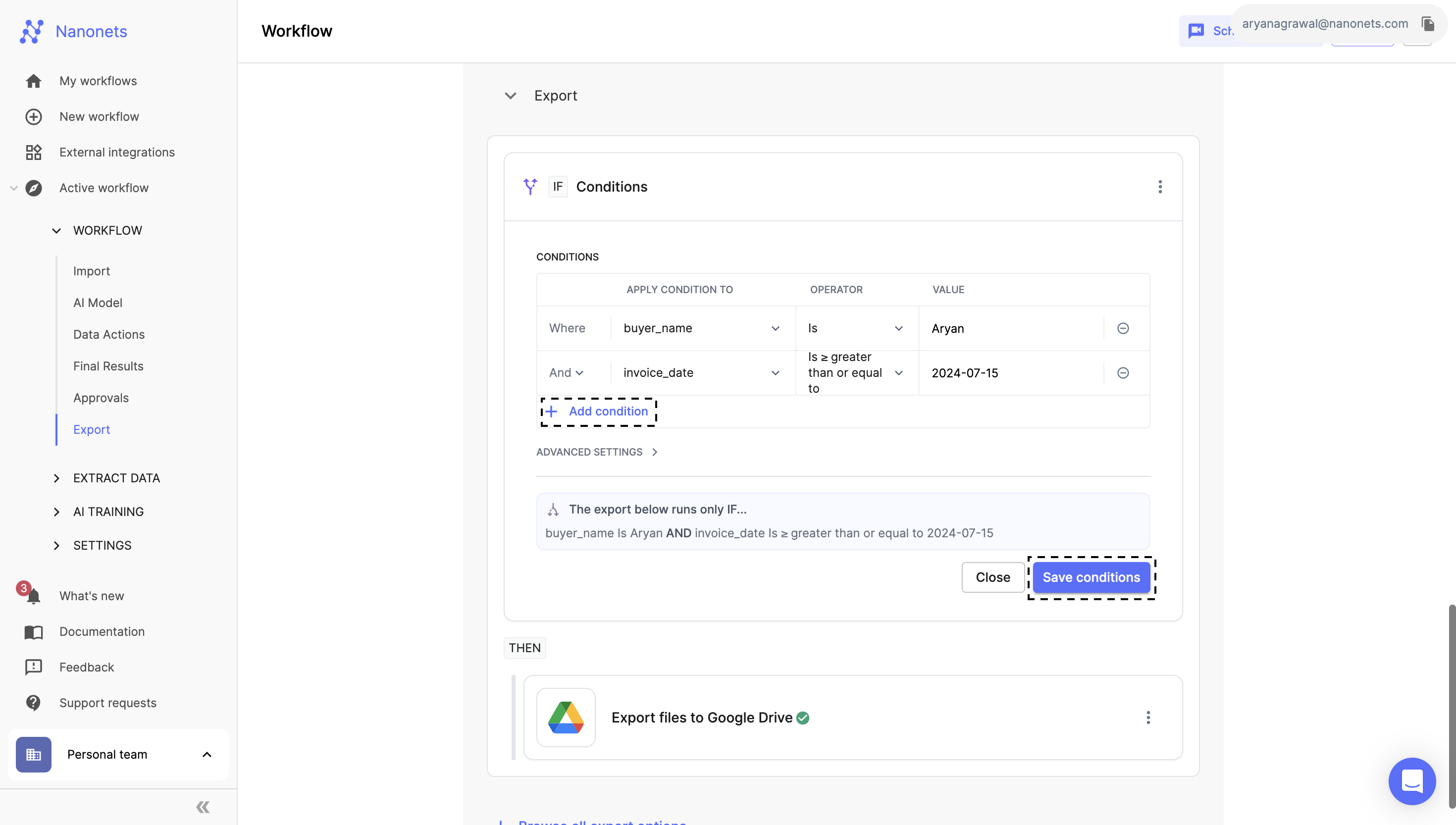
- Verify Export Setup:
- Ensure your export settings are correctly configured before implementing the conditional export logic.
Expected Output: File is renamed as {{invoicenumber}}{{buyer_name}}

Updated 8 months ago
